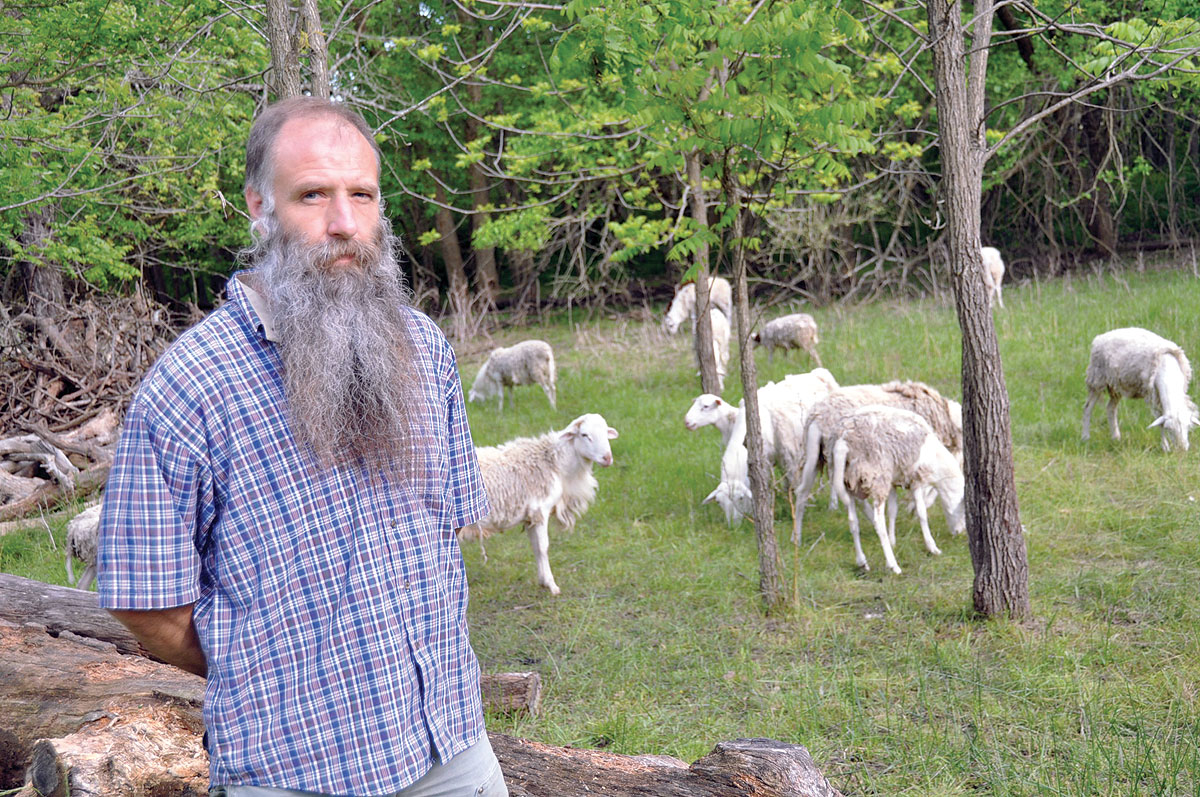
In the heart of the Ozarks, bordering Mark Twain National Forest in Christian County, the 1,100 acres of Bohmont Ranch are often lush and green in the dry months of summer.
The reason, says Terry Bohmont, is the native grasses he grows for pasture, hay and seed. His ranch east of Sparta, Mo., is primarily in pasture and hay. But on 140 acres at the ranch and on other nearby acreage, he raises native grass seeds – switchgrass, eastern gamagrass, Indiangrass, big bluestem, little bluestem and others.
Ten years ago when the weather was good, he sold truckloads of seed to dealers in Texas and Oklahoma. In good years he might sell 30 tons to dealers; farmers and ranchers; and Missouri departments of transportation, parks and conservation. In recent dry years, he’s sold 12,000 to 15,000 pounds of seed, mostly to farmers interested in an alternative to fescue or who have signed up for a government program that includes native grasses.
Terry and his father, Leland, were familiar with prairie grasses from their native Nebraska. In 1970, they bought the ranch, cleared the land and sowed hundreds of acres in fescue. Six or seven years later, he began seeing fescue foot and foot rot in his registered Angus (now commercial cattle out of polled Hereford bulls). That’s when he began looking for native seed.
“I finally got enough seed for eight acres of Indiangrass and four acres of Caucasian bluestem [not a native],” recalled Terry. Ian Kurtz, formerly with the Christian County Soil and Water Conservation District, helped him find seed from the Natural Resources Conservation Service facility at Elsberry, Mo. “We kept those two patches and harvested our own seed. By the next year we got some big bluestem and switchgrass, and used those for seed stock,” he added. That was the beginning of Terry and Cindy Bohmont’s seed operation.
In the Seed Business
Today, Terry harvests the seed by combining or brushing as early as late July for Caucasian blue stem and through the end of October for other grasses. Next, he dries, cleans and tests the seed, readying it for winter and spring sales. He sells on a pure live seed basis only and primarily uses Hulsey Seed Laboratory in Dekatur, Ga., for testing.
“I’ve found the Southern-based labs have better technology for testing warm-season seed,” he said, explaining native seeds take longer to germinate than the 15 to 21 days typical for cool-season grasses.
Terry’s yields fall between 30 and 100 pounds per acre, though only one year out of 10 will see 100 pounds. Only gamma grass (related to corn) actually requires fertilizer, though the other natives will certainly respond to fertilizer. However, with fertilizer’s high cost, Terry is happy to settle for reduced seed production to offset $600 fertilizer.
Why native warm-seasons?
You can see why if you visit the Bohmont Ranch July 2 during the field day he’s hosted since 1981. “When people come out, and their fescue is brown, and they see the natives are green and growing, it’s not hard to sell seed,” he said.
He runs cattle on seed pastures in the spring to suppress the growth, then pulls the cattle off when he’s ready for seed production. In May, he turned 50 head onto switchgrass seed fields to eat down the growth before the grass matures for seed.
Nutrition of Natives
As far as nutritional values, native grasses average 11 percent to 14 percent protein, which compares favorably to fescue, orchard grass and brome when these more traditional grasses are put up early, Terry said. Food value normally runs in the 80s for most natives. Eastern gamagrass is an exception, running in the upper 80s and 17 percent to 19 percent protein.
The biggest problem in changing to native grasses, Terry said, is the two years it takes to establish. Nevertheless, government cost/share programs can cover 40 percent to 50 percent of the cost of putting in native grasses.
Switchgrass, of course, has been promoted as a potential fuel for cellulosic ethanol. While the market for switchgrass as a fuel isn’t here yet, Terry said when it comes, it’s just one more reason to consider native grasses.
“You can harvest for fuel, grow for seed and pasture for forage, all from the same stand of grass,” he said.







